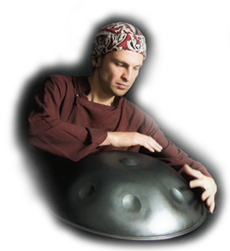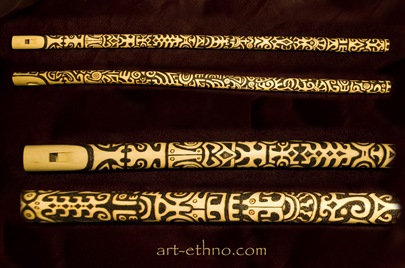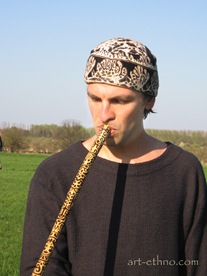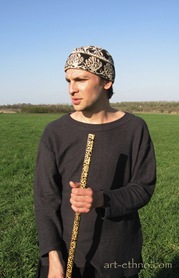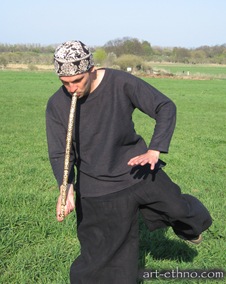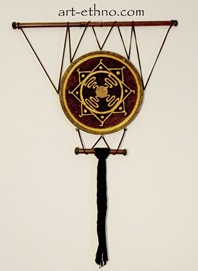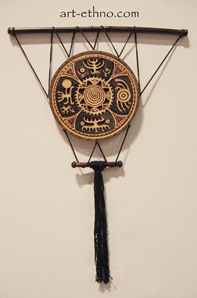This is traditional Tuvan song in non-traditional interpretation, arrangement made by us spontaneously. We had 1 hour of time and we was just celebrating our occasional meeting. In fact this is the combination of ancient tuvan folklore, contemporary fusion jazz, some middle eastern music and kuzhebarian rhythms:)
Raphael De Cock - vocals, throat singing (khoomei, kargyraa, sygyt), uilleann pipes
Dmitry Gorelik - guitar
Nadishana - hybrid kaval, dan moi
Recording made in KKStudio, Gliwice, Poland
Big thanks to Krzysztof Kobyli??ski and Michal from KKStudio
- Material - elder tree
- D key (C key available as well)
- made by Max Brumberg,
- Pyrography - Julia Surba
- Presentation - Nadishana
Price from 110 EUR (depending on artwork amount). Made by request. Available at our ethnic store now.
Flute decoration consists of fertility symbols and symbols connected with the ritual of Kuzhebar people called Shuol Khymat.
Shuol Khymat were usually celebrated twice a year ??? at spring (Ashuol Khymat) and at autumn (Yshuol Khymat). Ancient Kuzhebar people considered the sun as a source of the great power, which can be used in various ways. Their method of solar energy utilization is very similar to the description of photosynthesis process. We think it???s connected with their belief that human and plant worlds are not separated, more than humans are partly plants. It might be said that kuzhebar people had a peculiar knowledge about what we call now photosynthesis and vitamin D fixation.
Most relevant translation of ???Shuol Khymat??? term is Photosynthesis Dance (capturing-solar-energy dance)
Unfortunately the complete ritual is lost, but we had used some elements of it which are still extant. Normally the ritual had to take place in a very sunny day. It was accompanied by playing on overtone flute and by special movements. Ancient kuzhebar people believed that flute sounds in combination with special dance help to capture the solar energy in a most efficient way.
This is the new improved model of 1Tone drum. In this version the second layer of octave overtones has been added to each tongue which makes it different from other metal tongue drums drums.
http://shop.nadishana.com/1tone
you can buy this instrument here.
Gianni has been playing the didjeridoo for thirteen years and he has followed the project Ab-Origine for at least three years, working on the body, the breath and the rhythm. The thread conductor of this work and what has impassioned him, they have been the questions: Where is the rhythm born? What is the origin of this breath? Why to a heartbeat another follows of it? What's it hidden in the abyss of the silence? This strange fruit that is matured and that the pleasure he has to make you taste it, is ???Ab-Origine???. A strange, powerful and mysterious fruit. A work on the languages rare in it kind. But above all a work on the man, on his emotions and on their meaning.
To such end, this work uses more some collaboration musicians: the afro pecussionist Cico Rossi, the virtuoso multi instrumentalist Vladiswar Nadishana (jaws harp and harmonic flute), the teacher of Gregorian singing Federica Di Leonardo, the theremin player Valerio Can?©, the saxophonist Ivan Valentini, the electronic sound effects and drum machine of Enrico Marani and the cumbus and cavaquinho guitars of Nico Canzoniero. Obviously, the didjeridoo and the shakuhachi flute played by Gianni!!
Old Kuzhebar legends tell about courageous travellers, who took risks to travel through different reality tunnels, so they could see other worlds which were different from one we usually know. Sometimes these travellers brought some objects from the visited worlds or they tried to depict them. The images were used by them to get into the world they liked again.
Here are Three Magic Windows into three different worlds ???reconstructed??? by Julia Surba.
Dzuddahord is an unique experimental hybrid instrument invented by multi-instrumentalist Vladiswar Nadishana.
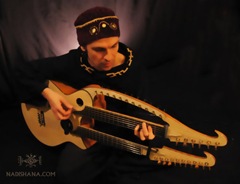
Dzuddahord combines three different musical instruments in one: mandola, sitar and gusli.


Where is the connection between the dzuddahord and pyrography? Pyrographic symbols burned by Julia Surba adorn now this unique instrument.
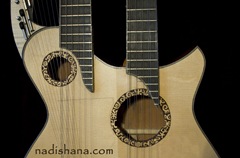
One part of the symbols has to conjure the soundingenieur, the other one is for conjuring the ghosts of non linear distortion.
At this video you can see the example of seemless integration of futujara flute in to the band setting. Unlike traditional slovak fujara, futujara made with the idea to be used as an ensemble instrument, not just a solo instrument.
This video recorded at SoUndSo Festival, Wels, Austria.
Nadishana - futujara,
Armin Metz - 6-string bass,
Steve Shehan - percussion
Three sonic travellers on their journey through scapes of ancient Kuzhebar, present ethno world fusion and future ambients melt their musical identities into one sound. Born in three different regions of the planet they came together to share their wide-spanned instrumental skills, blending exotic sculptures with earthy grooves and distinctive melodies, creating mind-shifting rhythms played with trancey facileness.


